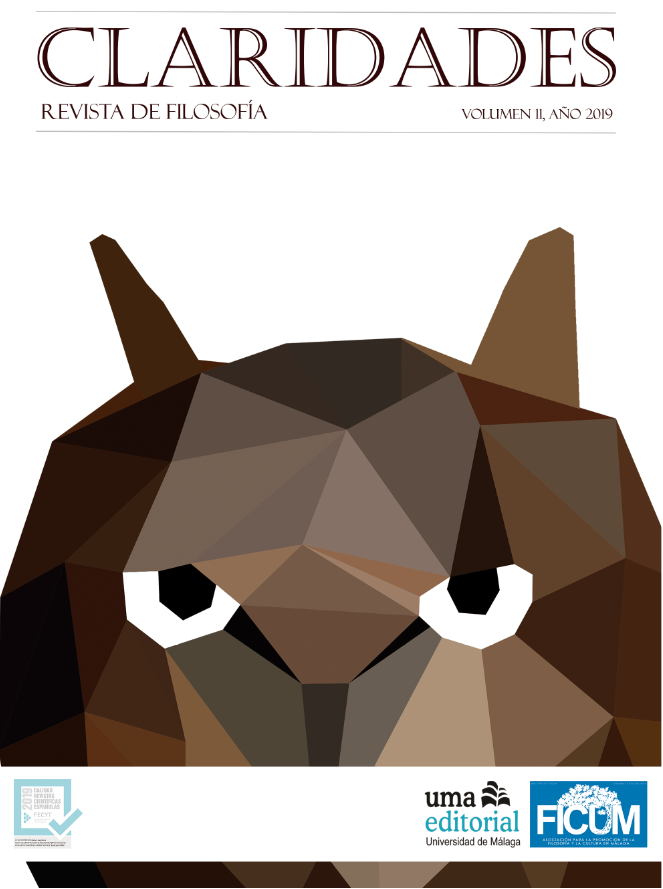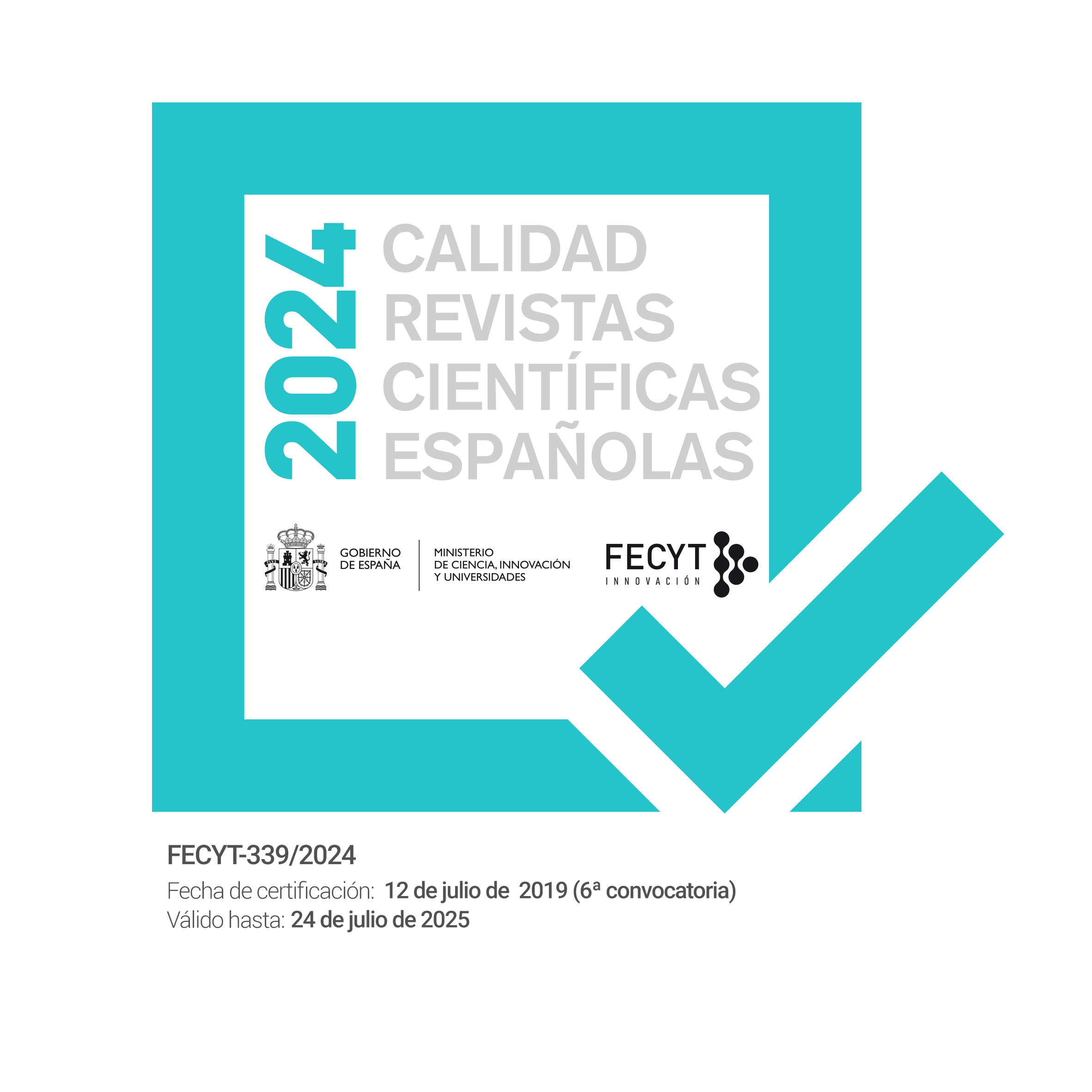The sublime in the anti-sublime aesthetics of everyday life
DOI:
https://doi.org/10.24310/Claridadescrf.v11i1.4882Keywords:
The Sublime, Everyday Aesthetics, Everyday Sublime, Modern Aesthetics, Contemporary Aesthetics,Abstract
In this paper, we try to approach two apparently opposed realities, such as the Romantic experience of the sublime and the emergent aesthetics of everyday life. However, we want to apply a different point of view from that of Thomas Leddy. For this author, there are extraordinary traits in ordinary objects and experiences, so the irrelevant things in daily life become big and frightening. For us, the sublime experience of everyday life involves taking the everydayness as pure everydayness, as it is proposed by Yuriko Saito. It requires paying more attention to different aspects than those fixed by modern aesthetics for the sublime, such as the emotion of astonishment and smallness. With these two features, we draw another historical path for this aesthetic experience thanks to thinkers like Burke, Schopenhauer, Ortega y Gasset and Carolyn Korsmeyer.Downloads
Metrics
References
Brady, E.: The Sublime in Modern Philosophy. Aesthetics, Ethics and Nature. Cambridge: Cambridge University Press, 2013.
Burke, E.: De lo sublime y de lo bello, trad. y estudio preliminar de Menene Gras Balaguer. Madrid: Tecnos, 2010 [1757].
Contesi, F.: “Savoring Disgust: the Foul and the Fair in Aesthetics” en British Journal of Aesthetics 52 (1), 2012, pp. 113-116.
Dowling, Ch.: “The Aesthetics of Daily Life” en British Journal of Aesthetics, 50 (3), 2010, pp. 225-242.
Forsey, J.: “Appraising the Ordinary. Tension in Everyday Aesthetics” en Proceedings of the European Society for Aesthetics, 5, 2013a, pp. 237-245.
Forsey, J.: The Aesthetics of Design. Oxford: Oxford University Press, 2013b.
Haapala, A.: “On the Aesthetics of the Everyday: Familiarity, Strangeness and the Meaning of Place” en Light, A. y Smith, J. M. (eds): The Aesthetics of Everyday Life. Nueva York: Columbia University Press, 2004, pp. 39-55.
Heidegger, M. Sein und Zeit, Frankfurt: Klostermann, 1977, [1927].
Johnson, D. B.: “The Postmodern Sublime: Presentation and its Limits” en Costelloe, T. M. (ed.): The Sublime from Antiquity to the Present. Cambridge: Cambridge University Press, 2012, pp. 118-131.
Kant, I.: Crítica del juicio, ed. y trad. de Manuel García Morente. Madrid: Espasa Calpe, 2001 [1790].
Keltner, D. y Haidt, J.: “Approaching Awe, a Moral, Spiritual an Aesthetic Emotion” en Cognition and Emotion 17(2), 2003, pp. 297-314.
Korsmeyer, C.: Savoring Disgust. The Foul and the Fair in Aesthetics. Oxford: Oxford University Press, 2011.
Leddy, T.: “Experience of Awe: an Expansive Approach to Everyday Aesthetics” en Contemporary Aesthetics Journal 13, 2015.
Leddy, T.: The Extraordinary in the Ordinary. The Aesthetics of Everyday Life. Ontario: Broadview Press, 2012.
Murcia Serrano, I.: “Ortega y Gasset y la metamorfosis de la categoría estética de lo sublime” en Romero de Solís, D. y Murcia Serrano, I. (coords.): En ningún lugar. El paisaje y lo sublime. Sevilla: Universidad de Sevilla, 2015, pp. 351-379.
Ortega y Gasset, J.: “Arte de este mundo y del otro” en Obras completas. Madrid: Santillana/Fundación Ortega y Gasset/Centro de Estudios Ortguianos, 2004a [1911], tomo I, pp. 434-450.
Ortega y Gasset, J.: “Meditaciones del Quijote” en Obras completas. Madrid: Santillana/Fundación Ortega y Gasset/Centro de Estudios Orteguianos, 2004b [1914], tomo I, pp. 745-825.
Saint Girons, B.: Lo sublime, trad. de Juan Antonio Méndez. Madrid: Antonio Machado Libros, 2008.
Saito, Y.: Everyday Aesthetics. Oxford: Oxford University Press, 2007.
Saito, Y.: “The Aesthetics of Weather” en Light, A. y Smith, J. M. (eds.): The Aesthetics of Everyday Life. Nueva York: Columbia University Press, 2005, pp. 156-176.
Schopenhauer, A.: El mundo como voluntad y representación, trad. de Eduardo Ovejero y Maury. México: Porrúa, 1987 [1818].
Stellar, J. et al.: “Self-Transcendent Emotions and Their Social Functions: Compassion, Gratitute and Awe Bind us to Others through Prosociality” en Emotion Review 9(3), 2017, pp. 200-207.
Trías, E.: Lo bello y lo siniestro. Barcelona: Ariel, 2001.
Downloads
Published
How to Cite
Issue
Section
License
Esta revista provee acceso libre inmediato a su contenido bajo el principio de hacer disponible gratuitamente la investigación al público. Todos los contenidos publicados en Claridades. Revista de Filosofía, están sujetos a la licencia Creative Commons Reconocimento-NoComercia-Compartirigual 4.0 cuyo texto completo puede consultar en <http://creativecommons.org/licenses/by-nc-sa/4.0>
Es responsabilidad de los autores/as obtener los permisos necesarios de las imágenes que están sujetas a derechos de autor.
Los autores/as cuyas contribuciones sean aceptadas para su publicación en esta revista conservarán el derecho no exclusivo de utilizar sus
contribuciones con fines académicos, de investigación y educativos, incluyendo el auto-archivo o depósito en repositorios de acceso abierto de cualquier tipo.
La edición electrónica de esta revista esta editada por la Editorial de la Universidad de Málaga (UmaEditorial), siendo necesario citar la procedencia en cualquier reproducción parcial o total.















6.png)
